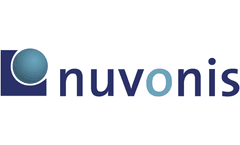Refine by
Viral Vector Articles & Analysis
29 articles found
The process of immortalization typically involves the introduction of specific oncogenes or the use of viral vectors to enhance the longevity of the cells. One notable approach is the use of the simian virus 40 (SV40) large T antigen, which interferes with the normal cellular senescence pathway, enabling podocytes to bypass their replicative limits. ...
These services cater to research labs by providing high-quality, ready-to-use viral vectors, thereby streamlining the experimental process. Utilizing advanced technologies and optimized protocols, these services ensure that researchers receive AAVs that meet their experimental requirements in terms of serotype, titer, and purity. ...
Advantages of Lentivirus as a Delivery System Lentiviruses, a subclass of retroviruses, play a crucial role in the delivery of CRISPR/Cas9 components. Unlike other viral vectors, lentiviruses can transduce both dividing and non-dividing cells, broadening the scope of potential applications. ...
With their ability to deliver genetic material into cells effectively, adenoviruses serve as valuable vectors in various biomedical applications. To harness their potential, specialized adenovirus production services have emerged, catering to the increasing demand for high-quality viral vectors. ...
Advances in delivery mechanisms, such as viral vectors and nanoparticles, are enhancing the efficiency of gene transfer into T cells. ...
These technologies allow researchers to predict viral behavior, identify potential targets, and expedite the drug development process. ...
AAV particles are naturally occurring viruses that have been modified to serve as vectors for gene transfer. These vectors are uniquely appealing due to their non-pathogenic nature, ability to transduce both dividing and non-dividing cells, and the capacity to induce long-lasting expression of the therapeutic gene. By utilizing premade AAV particles, researchers ...
There are different methods to induce cancer in zebrafish, such as chemical mutagenesis, radiation mutagenesis, insertional mutagenesis (which can be transposon-based), or viral vector mutagenesis. An emerging approach for translational cancer research is patient-derived xenografts in zebrafish embryos (zPDX). ...
One common biological system is viral gene delivery, where the viral vectors are modified to carry the genes and deliver them to the target cells. ...
Overcoming issues related to mRNA stability and cellular uptake remains a critical area of focus for researchers, who are exploring various delivery methods such as lipid nanoparticles and viral vectors to enhance mRNA delivery efficiency. Despite these challenges, the potential benefits of custom mRNA production are substantial, promising groundbreaking ...
Our miRNA overexpression stable cell lines are constructed by lentivirus transduction or non-viral plasmid transfection of vectors optimized by our scientists to enable expression and maturation of miRNAs inside cells. ...
One such system employs reporter lentiviral particles, using the power of viral vectors to inject and express these markers in target cells. This article delves deep into the concept of reporter lentiviral particles and their remarkable contribution to biomedical research. ...
To mitigate sequence diversity, vaccine design focuses on highly conserved domains, especially those targeted by broadly neutralizing antibodies on viral envelope glycoproteins. Due to the high conservation of the backbone region of HA2, it represents an excellent target.Hepatitis VirusesInfection with hepatitis C virus (HCV) can lead to liver diseases such as cirrhosis or ...
In non-integrated gene therapy, a single DNA fragment containing the correct copy of the CFTR gene is delivered to human cells, but it is not permanently integrated into the genome. Non-viral vectors have been developed for delivering the CFTR gene. A major advantage of these non-integrated gene delivery methods is that it does not disrupt the rest of the genome. ...
In many cases, gene therapy requires a vector to deliver the gene therapy drug to the target cell. Viral vectors have been one of the most widely studied vectors due to their outstanding transduction efficiency and other significant advantages. Viral vector-based gene therapy has now achieved ...
Viral vector characterization covers a wide range of viral vectors, such as lentiviral (LV) vectors, adenoviral vectors, and adeno-associated viral (AAV) vectors. ...
Advances in molecular technology have facilitated the development of other platforms, such as recombinant protein vaccines, nucleic acid vaccines, and viral vector vaccines, which have further diversified global vaccine development. ...
The aim of the project was to develop a Polish complementary system of molecular surgical navigation for the treatment of ...
Many commercial vaccines, both live and inactivated, are available on the market and protect from NDV infection and disease. In addition, viral vectors based on Newcastle disease virus have been previously evaluated as vaccines against e.g. ...
ByNuvonis
Many cell and gene therapy solutions have shown considerable promise as a source of possible treatments for a wide range of chronic disorders. However, these sophisticated therapies introduce additional barriers such as the requirements for ultra-low and cryogenic storage, which affect numerous steps of the biomedical solutions’ life cycles, from their development to their administration. ...










